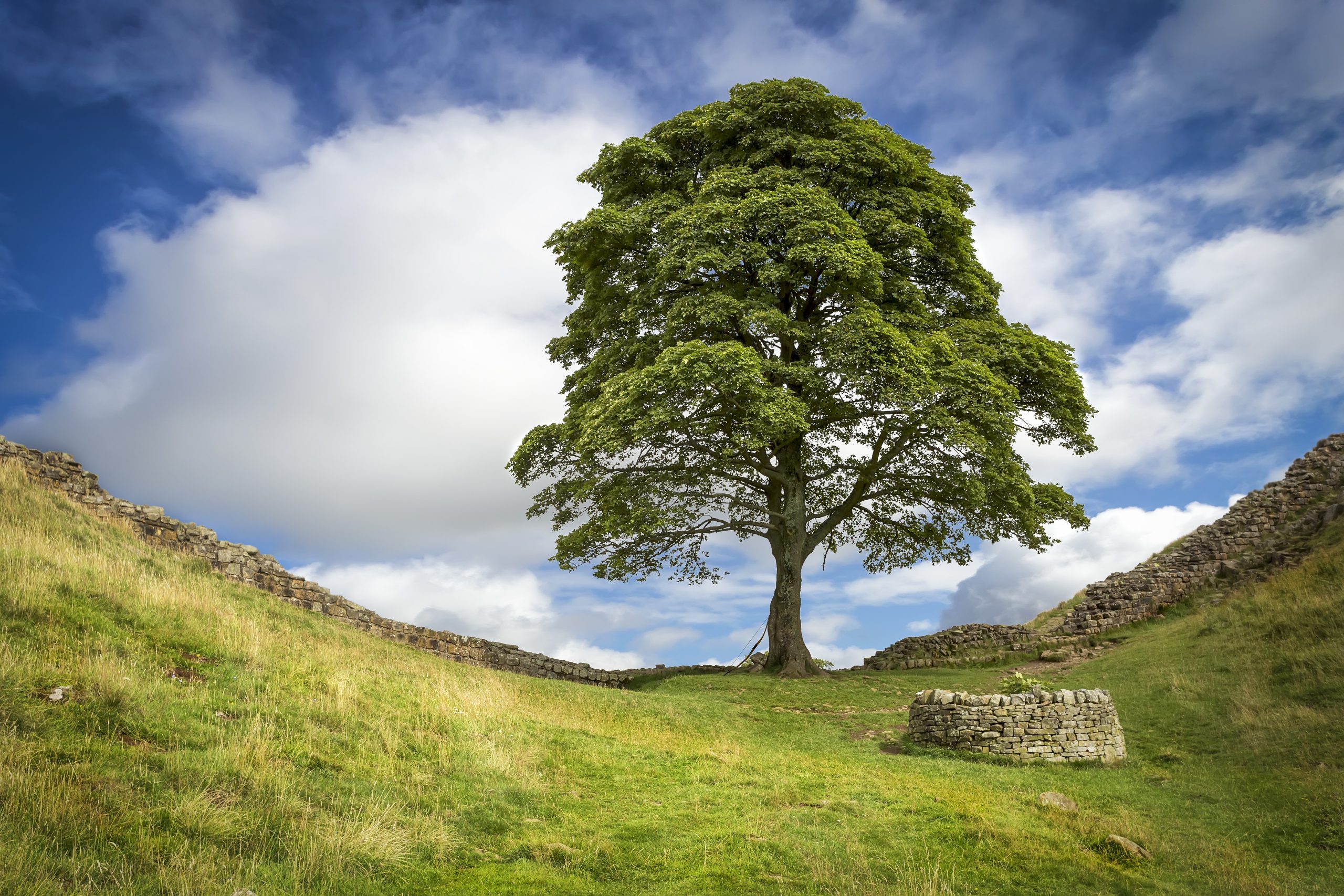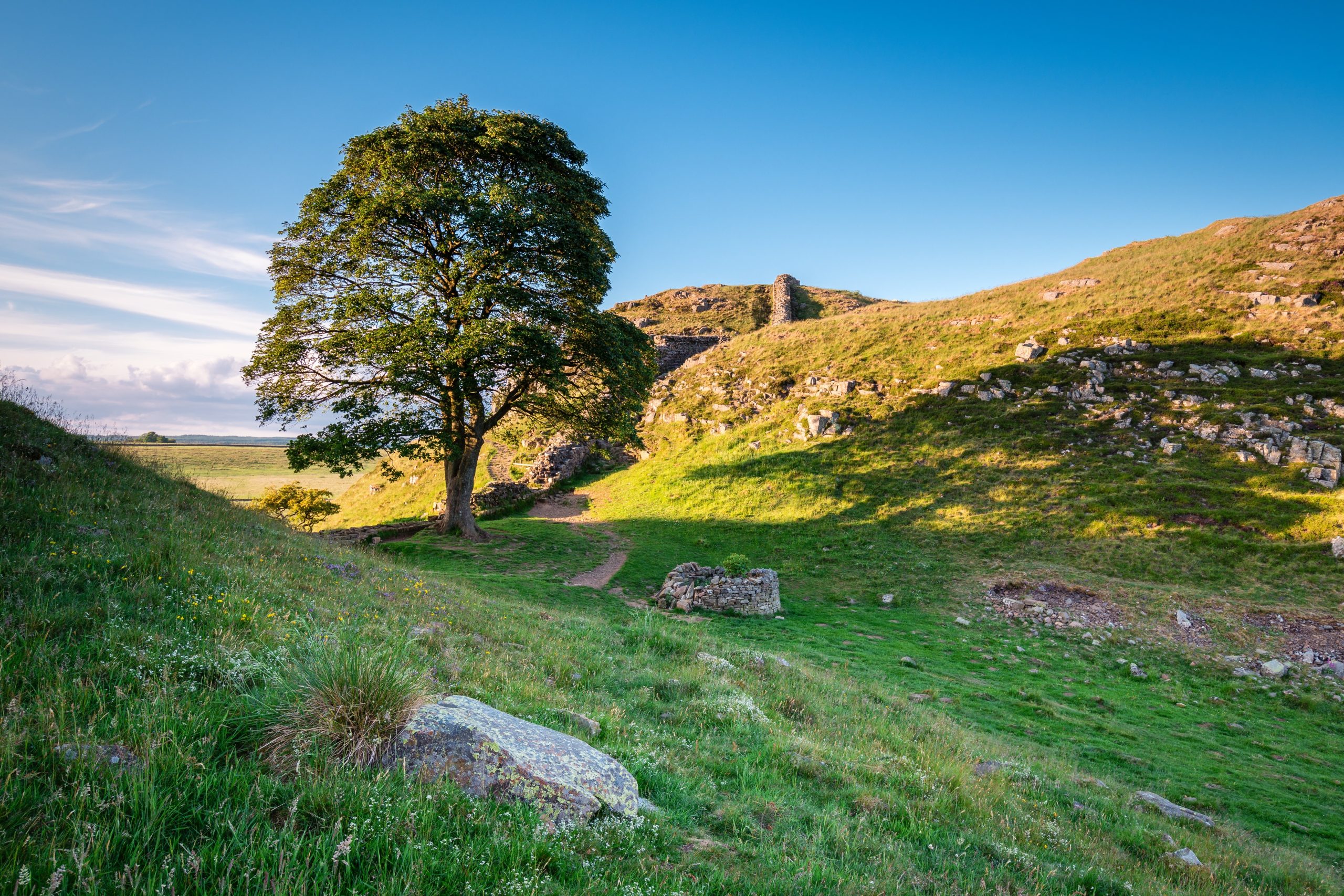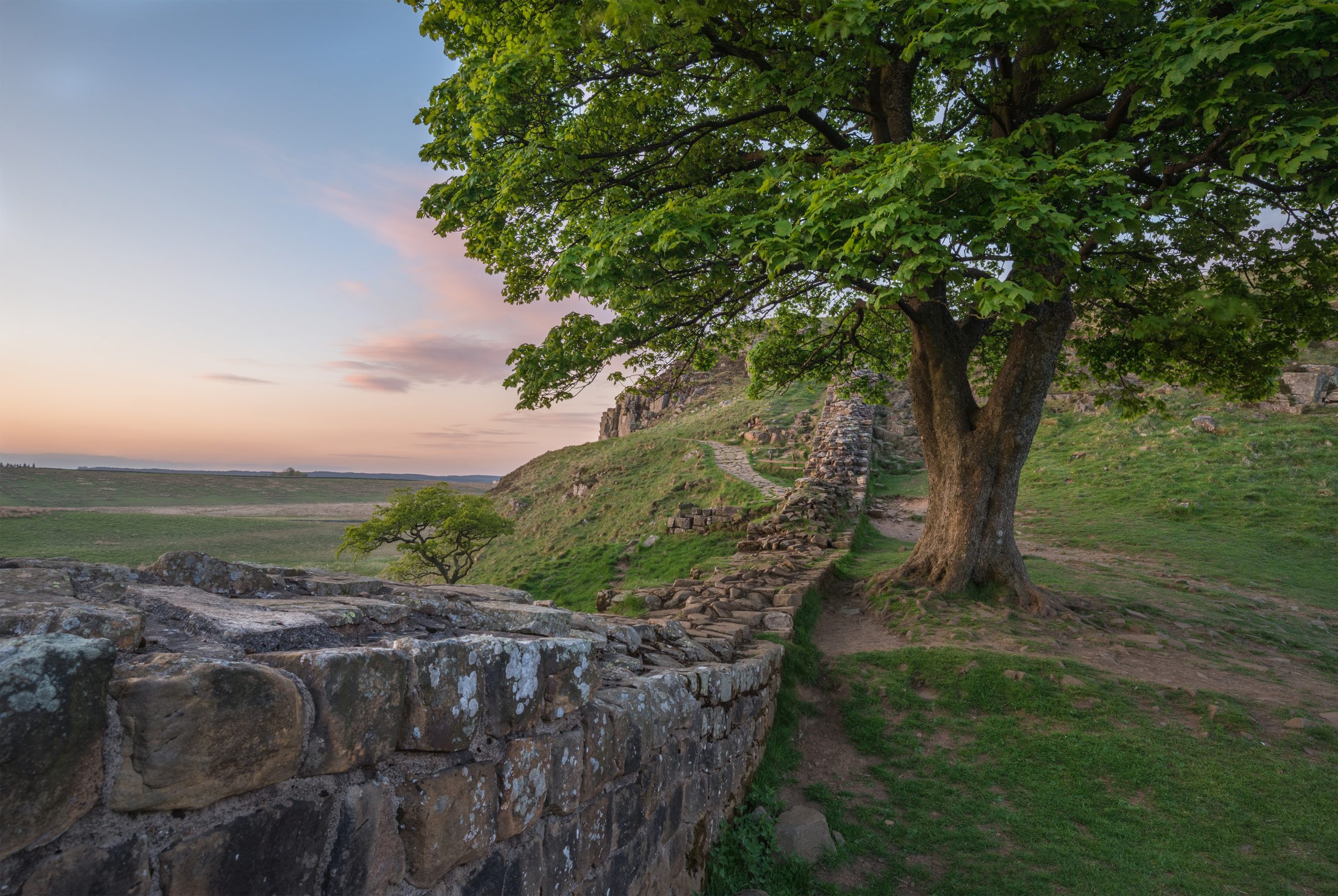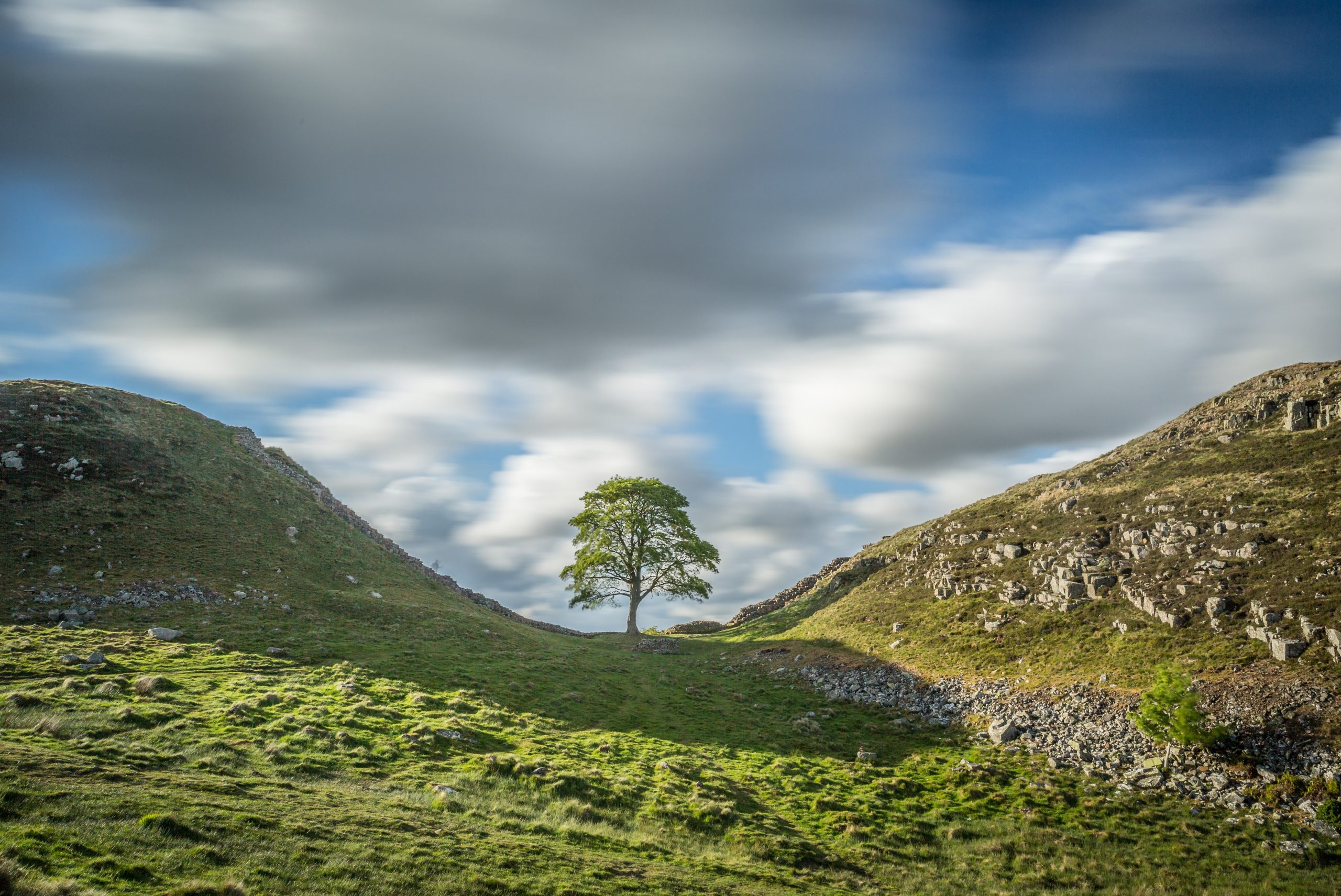History of the Sycamore Gap Tree on Hadrian’s Wall
By Mark Wright
Affectionately known as the Sycamore Gap Tree, the iconic and photogenic lone sycamore that stood prominently on Hadrian’s Wall in Northumberland captured the imagination of countless visitors, photographers, nature enthusiasts and of course Hadrian’s Wall walkers. The tree’s history is not only intimately tied to its natural surroundings but also to its cultural significance as a symbol of resilience and continuity. It is believed to have stood for around two hundred years.

Scientifically known as Acer pseudoplatanus, the species is native to central Europe, Italy and western Asia. It is thought to have been introduced to the UK by the Romans. It is characterised by its distinctive five-lobed leaves and winged seeds, known as samaras. Sycamores can grow quite large, potentially above 12 metres, and have a broad, spreading canopy, again potentially 8 metres or more. The Sycamore Gap Tree was a perfect example of the species. Nestled in a dip near Crag Lough, approximately two miles west of Housesteads Roman Fort, it stood in solitary splendour in one of the most picturesque settings in the Northumberland National Park.
Just a little background for readers who perhaps aren’t too familiar with Hadrian’s Wall. Often referred to as the Roman Wall, Hadrian’s Wall is a UNESCO World Heritage Site and one of the most significant historical landmarks in England. Built during the reign of Emperor Hadrian (117-138 AD), the wall stretches approximately 73 miles across the north of England, from the banks of the River Tyne in the east, to the Solway Firth in the west. The Hadrian’s Wall walk is slightly longer at 84 miles.

The wall marked the most northern extreme of the Roman Empire and provided a defence against attacking tribes, such as the Picts. It was an astonishing feat of engineering, comprising stone fortifications, ditches, and a system of forts and milecastles. Hadrian’s Wall played a fundamental role in the history of Roman Britain and the relationship between Romans and the native people of Northern England.
Although the Sycamore Gap Tree did not have a direct historical connection to the construction of Hadrian’s Wall, it did of course become an important symbol of the wall’s enduring legacy, and the sycamore’s popularity was in no small part a product of its spectacular setting on this historical landscape. The two undoubtedly complimented each other.

Perhaps a touch trivial when compared with its real significance within Northumberland life, the tree nevertheless gained widespread recognition and acclaim due to its appearance in the 1991 film ‘Robin Hood: Prince of Thieves’ starring Kevin Costner and Morgan Freeman. In the film, Sycamore Gap served as a backdrop, ensuring the tree became an instant cinematic icon and a draw for tourists, nature enthusiasts and increasingly so since the arrival of social media, photographers too, particularly with dark sky photographers.
Of course the tree’s iconic status extended far beyond its cinematic role. It became a symbol of endurance and vitality within a historic landscape that has weathered the centuries. Visitors were drawn to the tree not purely for its aesthetic appeal but also for the solitude and resilience it represented. Standing alone, exposed to the elements, it continued to thrive. Its position in the rugged Northumberland landscape symbolising the enduring spirit of nature in the face of adversity.

As we said, it’s believed the tree had stood for around two hundred years, and like any living organism, it required care and maintenance. The National Trust played a key role in preserving the tree and its surroundings. Conservation efforts included regular tree inspections, hazard assessments, and necessary tree surgery to ensure the tree’s health and longevity. These measures helped protect the tree from damage and disease. Visitors also had a role to play in the conservation of the sycamore by sticking to designated paths, avoiding damage to the tree’s roots, and respecting the natural environment.
What the sycamore could not defend itself against, and what neither the National Trust nor the thousands upon thousands of walkers who delighted in seeing the tree could foresee, was unthinkable human intervention. At some stage between the evening of Wednesday 27 and the morning of Thursday 28 September the Sycamore Gap Tree was felled in what the authorities described as, “A deliberate act of vandalism”.

The National Trust have now removed the tree from Hadrian’s Wall and are safely storing it at a property in their care. Fortunately they were able to retain the tree in large sections, meaning they can keep all options open as to what becomes of the tree in future. They have also gathered seeds from the tree, which are being looked after by specialist propagators at their Plant Conservation Centre. In addition to this, the National Trust have also erected a temporary fence to protect the tree’s stump, which may begin to sprout new shoots in time.
The story of the Sycamore Gap Tree on Hadrian’s Wall is a tale of immense natural beauty, for some, cinematic fame, certainly cultural symbolism, and undoubtedly historical resonance. The lone sycamore simply captured the hearts and imaginations of all those who saw it.
To learn more about Hadrian’s Wall and to book your 2024 adventure email us [email protected] or call us on 017687 72335 to speak with one of our walking holiday experts.
